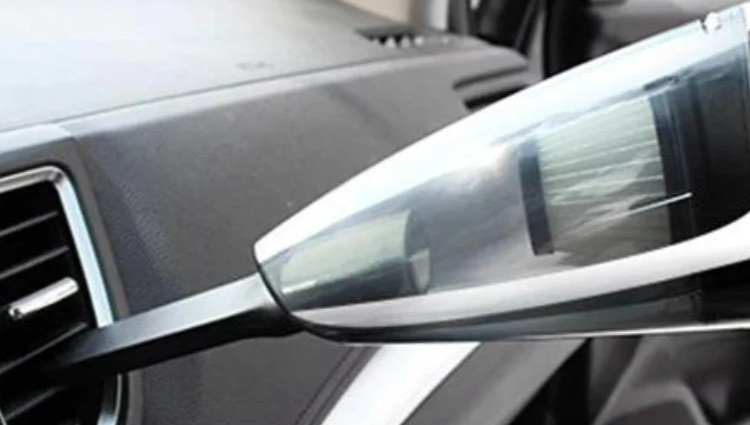Key Takeaways
- Studies suggest car boots can harbour more bacteria than average toilet seats, posing potential health risks for UK drivers.
- Dirty car interiors can trigger respiratory problems through allergens and mould, and may harbour dangerous pathogens like E. coli.
- Nearly two-thirds of British drivers clean their car interiors fewer than six times yearly, potentially increasing health risks.
- Portable vacuum cleaners provide health protection through professional-grade suction and regular deep cleaning.
- Mental health suffers significantly from cluttered, dirty car environments, increasing stress and reducing cognitive function.
The average British driver spends plenty of time in their vehicle, yet most are unaware of the hidden health dangers lurking within their car’s interior. Recent studies reveal the shocking truth about bacterial contamination levels that even exceed those found in public facilities, making portable cleaning devices a health investment rather than a luxury convenience.
Car Boots Can Harbour More Bacteria Than Average Toilet Seats
Research suggests that car boots can register higher bacterial contamination levels than typical household toilet seats. This finding challenges common assumptions about cleanliness and highlights a significant oversight in personal hygiene practices amongst UK motorists.
The warm, enclosed environment of vehicle storage areas creates ideal breeding conditions for harmful microorganisms. Food spillages, muddy boots, sports equipment, and general debris accumulate over time, transforming these spaces into bacterial hotspots. Unlike toilets, which receive regular disinfection, car boots often go months without proper cleaning attention.
Temperature fluctuations within vehicles further accelerate bacterial growth, particularly during warmer months when interior temperatures soar. But portable cleaning solutions offer practical ways to address these contamination issues before they escalate into serious health concerns.
Hidden Health Threats Lurking in Car Interiors
1. Dangerous Bacteria and Pathogens
Scientific analysis of vehicle interiors reveals the presence of bacteria including E. coli, Staphylococcus, and Salmonella, which can pose health risks. These pathogens thrive on food remnants, beverage spills, and organic matter tracked in from shoes and clothing. Uncleaned car interiors actively spread micro-organisms – causing various illnesses ranging from mild stomach upsets to severe infections.
Contact transmission occurs through touching contaminated surfaces such as steering wheels, gear shifts, and door handles, then inadvertently transferring pathogens to the mouth, nose, or eyes. Regular exposure increases infection risks, particularly for individuals with compromised immune systems or existing health conditions.
2. Allergens Triggering Respiratory Problems
Vehicle interiors trap airborne allergens, including pollen, dust mites, and various pollutants within their confined spaces. These particles circulate continuously through ventilation systems, creating concentrated exposure levels that exceed outdoor environments. Symptoms include persistent sneezing, coughing, itchy eyes, and potentially serious asthma attacks.
Fabric surfaces within cars act as reservoirs for allergen accumulation, particularly seats and carpeting. Every movement stirs settled particles back into the air, creating ongoing respiratory challenges for sensitive individuals. The confined nature of vehicle cabins intensifies these effects, making thorough cleaning necessary for maintaining breathable air quality.
3. Mould Growth in Warm, Damp Conditions
Moisture from wet clothing, beverage spills, and humid weather creates perfect conditions for mould development within vehicle interiors. Once established, mould colonies release spores continuously into the cabin air, leading to respiratory issues, allergic reactions, and other health complications.
Mould growth often occurs in hidden areas such as under floor mats, within air vents, and behind seat cushions. These locations remain unnoticed until contamination spreads significantly, making early intervention through regular cleaning vital for prevention.
4. Pest Infestations Spreading Disease
Food crumbs and spillages attract various pests, such as ants, cockroaches, and potentially rodents to vehicle interiors. These unwanted visitors carry additional pathogens and create secondary contamination through their droppings and movement patterns.
Cockroaches particularly pose significant health risks by carrying bacteria throughout vehicle surfaces. Their rapid reproduction rates mean small infestations quickly become major problems without prompt cleaning intervention.
Most UK Drivers Neglect Regular Car Interior Cleaning
Survey data reveals that nearly two-thirds of British drivers clean their vehicle interiors fewer than six times annually, potentially increasing health risks. This alarming statistic demonstrates the widespread neglect of basic hygiene practices that directly impact personal health and well-being.
Time constraints, lack of proper equipment, and underestimation of health risks contribute to this cleaning deficit. Many drivers prioritise exterior washing for aesthetic reasons whilst ignoring interior contamination that poses genuine health threats to occupants.
Mental Health Impact of Dirty Car Environments
Increased Stress and Anxiety Levels
Research demonstrates clear connections between disorganised environments and elevated stress responses. Cluttered, dirty car interiors contribute to mental fatigue and anxiety by creating visual chaos that the brain interprets as stressful stimuli.
The psychological burden of maintaining an unkempt vehicle extends beyond the immediate driving experience. Shame associated with interior conditions affects self-esteem and social interactions, as evidenced by drivers avoiding passenger situations due to embarrassment about their vehicle’s state.
Reduced Focus and Cognitive Processing
Visual clutter competes directly for attention resources, reducing the brain’s ability to process information effectively. This cognitive interference proves particularly dangerous during driving when focus and quick decision-making remain critical for safety.
Studies indicate that organised, clean environments promote mental clarity and improved emotional regulation. Conversely, chaotic car interiors create ongoing sensory overload that leaves occupants feeling overwhelmed and mentally drained after journeys.
High-Risk Areas Inside Your Vehicle
1. Car Boot – The Most Contaminated Zone
One study identified car boots as the highest contamination zones within vehicles. These areas receive the most diverse range of potentially dirty items, including shopping bags, sports equipment, tools, and emergency supplies – all without regular cleaning attention.
The enclosed nature of boot spaces, combined with limited ventilation, creates optimal conditions for bacterial multiplication. Temperature fluctuations during different seasons further accelerate microbial growth, making boots genuine health hazards without proper maintenance.
2. Driver Footwell and Controls
Frequent contact with pedals, floor mats, and control surfaces makes the driver’s area particularly susceptible to contamination transfer. Shoes track outdoor pollutants, dirt, and bacteria directly into these confined spaces – where they accumulate over time.
Hand contact with contaminated steering wheels, gear shifts, and dashboard controls creates direct pathways for pathogen transmission. The combination of moisture from hands and organic matter creates ideal breeding conditions for harmful microorganisms.
3. Seatbelt Buttons and Handbrake
These frequently touched surfaces harbour concentrated bacterial populations due to constant hand contact combined with infrequent cleaning. Seatbelt mechanisms particularly accumulate dirt and bacteria in their mechanical parts – where conventional cleaning methods struggle to reach effectively.
Handbrakes receive oils from hands whilst remaining in warm, enclosed positions that promote bacterial growth. Their textured surfaces provide additional hiding places for contaminants that resist basic wiping attempts.
Portable Vacuum Cleaners: Health Protection
Regular Vacuuming Reduces Allergen Exposure
The systematic removal of dust, pollen, and debris through regular vacuuming significantly improves interior air quality and reduces respiratory irritation. The Health and Safety Executive recommends using quality vacuum cleaners to control dust exposure, as uncontrolled accumulation links to chronic obstructive pulmonary disease (COPD).
Portable vacuum systems enable thorough cleaning of hard-to-reach areas, including seat crevices, air vents, and floor mat edges where allergens typically concentrate. Consistent removal prevents particle build-up that creates ongoing health challenges for sensitive individuals.
Professional-Grade Suction for Deep Cleaning
Modern portable vacuum cleaners deliver professional-level cleaning performance through high-powered suction systems and specialised attachments. These tools effectively extract embedded dirt, bacteria, and allergens from fabric surfaces that basic cleaning methods cannot address adequately.
Multiple attachment options allow thorough cleaning of various interior surfaces, from upholstery and carpeting to dashboard crevices and air vents. This versatility ensures no contamination zones remain untreated, providing health protection for vehicle occupants.
Portable Cleaning Devices Offer UK Drivers Practical Health Solutions
The evidence demonstrates that vehicle interior contamination poses genuine health risks that UK drivers can no longer afford to ignore. From bacterial infections and respiratory problems to mental health impacts, dirty car environments create multiple pathways to illness and discomfort.
Portable cleaning devices provide accessible, effective solutions that address these health challenges without requiring professional services or significant time investments. The regular use of proper equipment transforms vehicle interiors from contamination sources into clean, healthy environments that support rather than threaten occupant well-being.
Investing in quality cleaning equipment can lead to improved health outcomes, enhanced comfort, and peace of mind during daily journeys. For UK drivers serious about protecting their health, can be valuable tools rather than optional conveniences.



Comments are closed.